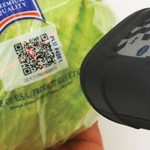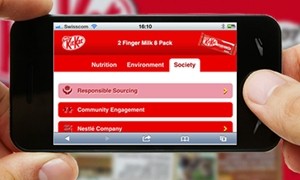Cracking codes

A year ago, an online survey by market research company Skopos turned up the surprising fact that only 12% of UK respondents had scanned a quick response (QR) code. More surprising still, over 50% did not know what the 2D matrix-style codes were, even when the concept was explained.
Of course, a year is a long time in fast-moving technology. Some might also squeeze optimism from a German use rate twice that of the UK (and second only to the US as the country with the highest QR code usage). But should our conclusion be that codes are currently not being well-applied and supported, or that the technology is wanting? Is this simply a stopgap while we wait for something better to catch on?
In fact, in many ways QR codes are the right technology in the right place at the right time. They were first conceived almost 20 years ago for internal automotive industry applications. But the higher-resolution scanning of today's web-enabled smartphones has made them accessible to a huge number of consumers.
Vlad Sljapic, European sales director at Domino Printing Sciences, explains some of the technical advantages: "QR codes are far more efficient at compressing data than linear barcodes and other 2D codes; they are resilient and not dependent on orientation." He adds: "As a symbology it is also completely unaffiliated, neutral and open-use, with no licensing fees."
At the same time, many would argue, the availability of this technology has coincided with increased consumer curiosity about the origins of their food.
Swedish research company Innventia commissioned another online survey, this time of 1,500 consumers across three countries (not including the UK). Among other findings, this indicated that 69% of Indian respondents and 63% of Swedes were interested (or very interested) in being able to scan goods for more information about their origin, contents and supply chain.
At the same time, there is this stubborn sense of a gap between theory and reality. According to pre-printed label supplier Label Apeel, many bigger brands are applying QR codes, but often relatively unimaginatively, and typically just linked to a web page.
"No one has really grabbed this technology with both hands," says md Stuart Kellock. "People are asking: 'Why are consumers not scanning the codes?' The real question is: 'Why would they want to scan them?' At the moment, I don't see that motivator which makes me think: 'I have to buy that product and scan that code!'"
He explains: "The people who really should be using QR codes are the smaller brands. They're low-cost and easy to set up, and they allow you to gather data about your customers." So, for instance, a regional brand stocked by a limited number of local retailers can communicate directly with its customers, he suggests, and sell to them direct – at retail prices – via its website.
Among other print technologies, Label Apeel offers digital printing, and is working with marketing and promotions agency Hive to produce unique QR code labels for just this type of smaller brand. As well as gathering customer data, this allows the brand owner to direct consumers towards linked promotions without the risk of the same code being accessed twice.
"This is the sort of thing that has to happen," says Kellock. "If the code simply takes consumers to a url, they won't bother. There has to be a motivation, which could be a cash benefit or some other kind of benefit." Exclusive video footage of a sport sponsored by the brand, for instance, might be another bonus.
So why is so much of this still theoretical? "It's that old heady mixture of marketing and IT," he argues. "They seem to revolve around each other rather than co-operating. It's the age-old problem of getting people to sit down together, talk, and recognise the mutual benefits."
Promotional uses
In the US, there are some large-scale traceability schemes, often using QR codes as the medium, particularly in the fresh produce sector. One of these, TrueTrac, was recently acquired by another, FoodLink. Former chief executive of TrueTrac and now vice president of strategy and business development at FoodLink, Ray Connelly, might be expected to extol the virtues of QR codes with regard to supply chain transparency.
Instead, he says: "It's in the area of promotions that QR codes have their biggest and best use. Certainly, there's a section of the population that wants to know where a product comes from. But there's another section that just wants a coupon, a recipe or other customer loyalty rewards. QR codes can do the full 360."
Meanwhile, Sljapic believes that figures for overall QR code use among consumers are relatively meaningless. He emphasises the promotional link: "The incentive and uptake are going to be very tightly linked to the success or failure of any specific marketing campaign."
Sljapic adds: "It's not about the technology, it's about the applications."
But of course, quite apart from satisfying consumer curiosity about provenance, in the produce sector in particular, the traceability element in the codes can also provide an efficient tool for supply chain product recalls, should the need arise.
Likewise, as Sljapic points out, a QR code can act as a tool (albeit a rather unrefined one) to monitor reselling and parallel trading. But as he says: "Its usefulness is completely predicated on someone actually scanning the code so the location can be ascertained."
Despite all this multi-tasking potential, might the QR code not actually be around for long enough to see all its promise fulfilled? Sljapic points to visual recognition as a technology which might supersede it. This could use images rather than codes as the trigger. "It by-passes the need for a code. Why would Coca-Cola want to use anything other than its own logo for triggering content?" he asks.
At thermal coding specialist Zebra Technologies, head of market development Matt Parker sees the challenge coming from another direction. "If we're honest, QR codes have had their time in the sun. Near field communication (NFC) tags, a subset of the widely-applied radio frequency identification (RFID) technology, give a more dynamic level of engagement, taking you to a location and immediately displaying content on a smartphone," he explains. "The fact that this is now an almost standard feature on the majority of devices tells its own story."
While QR codes require consumers to download the necessary application and capture the image, an NFC-enabled smartphone will, so long as it is turned on, automatically access content in proximity to a tag.
At FoodLink, Connelly is wary about both visual recognition and NFC as alternatives to QR codes. "Google, for instance, has put a lot of effort into visual recognition, and there'll be a place for it some way down the road," he says. "But it's still too new."
Of NFC he says: "In the supply chain, RFID is useful. But I don't know consumer-wise if it will ever gain acceptance because of the privacy issue. The tags can be activated without you even seeing them or knowing they are there."
In other words, the relatively cumbersome nature of QR codes, in the sense that consumers have to consciously opt to scan the code, could turn out to be their saving grace.
And of course, there are other, simpler ways for brands to mobilise the mobile. In April, Weetabix announced what it claimed was the first ever 'pay by picture' promotion. This invited TV viewers to snap an on-screen shot of the product and show the smartphone image in a Boots store for a free pack of the real thing.
When it comes to the supply-chain type application of high-content codes and tags that Connelly mentions, Parker at Zebra is clear that a "layered approach" is the key to success. "For today's manufacturers, end-to-end track-and-trace is going to require a layering of different levels of human-readable and auto-ID," he says. He points out that a single product might change hands as many as 30 times before it finds its way on to the shelf. Each stage in the chain will use different levels of linear barcode scanning, 2D codes, up to RFID for bulk pallet or case-level scanning.
Whatever the competition from alternative technologies, it seems unlikely that QR codes are going to disappear overnight. Quite apart from their supply-chain benefits, they provide smaller brands in particular with some imaginative routes to building customer loyalty, assuming that there is a clear and valid motivation for engagement. They could just give brand owners that higher level of differentiation they are looking for.













